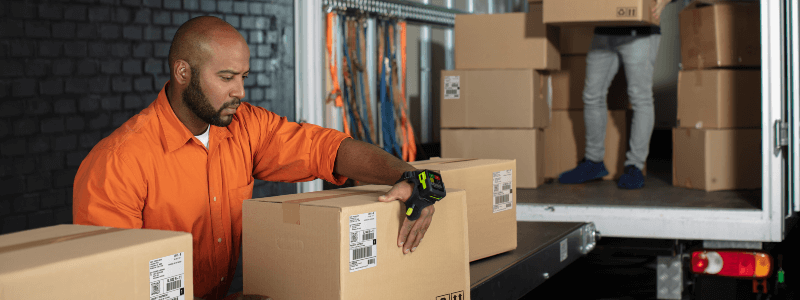Big Productivity with Small Wearables
“If that doesn’t work, try a bigger hammer.” It’s an old saying we can all appreciate, but it isn’t always the best solution. Regarding the mobile workforce, smaller is sometimes better.
As consumers, we’ve watched cell phone handset sizes change: first from large 1980’s car phones to pocketable “brick” phones. Then, smaller “flip” phones were replaced by our larger smart phones, which vary on screen size but remain pocketable.
For mobile workers, devices sizes stayed relatedly consistent for a long time. Size typically reflected the level of durability a device could sustain. A device with a 6 foot (2 meter) drop specification was larger than a device that was rated to a 4 foot (1.2 meter) drop. Form factors could vary: brick or “pistol-grip” depending on how intensively users would scan barcodes, but the device sizes were bulky by today’s standards.
With 46% of respondents naming faster delivery as a top challenge they are facing, small wearable devices can give your mobile workers a big boost to complete their tasks at faster and more efficient rates.
Wearable scanning solutions
Wearable devices were rare ten and twenty years ago. They were used for specific job roles, like parcel sorting, which required a lot of hands-on work. And while the form factor and the use cases were different, workers using these devices often connected to the same enterprise systems as their rugged mobile device-toting teammates.
Apps and screen sizes
Wearable devices have often used the same (or similar) components common to traditional rugged devices – sometimes the display was the same part, turned into a landscape orientation for readability while worn on the worker’s wrist.
The applications flipped to landscape view as well for easy adoption. But for many, the term “wearable” evokes a different image today: smart watches and fitness devices. Zebra Technologies recently added the WS50 form to their wearable portfolio. This form has its own user experience.
One size fits… small?
With a 2-inch display, on-screen interaction may be different from the 4-inch (or larger) displays on other Zebra mobile computers, but the productivity gains are equally achievable. For example, navigating a picking task workflow means presenting the user with concise step-by-step direction: proceed to aisle, then shelf and bin, then SKU. This added automation eliminates non-essential steps in the workflow.
Big opportunity
Smaller wearables, like the WS50, have a chance to leave a big footprint in empowering mobile workers. Using Ivanti Velocity to optimize screens for faster task completion can be further complemented by adding voice with Ivanti Speakeasy for Velocity. This wearable pairs nicely with a wireless headset so workers can speak through tasks, reducing or eliminating the need to glance down at a device screen.
Mobile workers keep both hands available to pick products, easily complete tasks and communicate with enterprise systems. Using a device light enough to be easily worn all day gives mobile workers the edge they need to accomplish more each shift!

